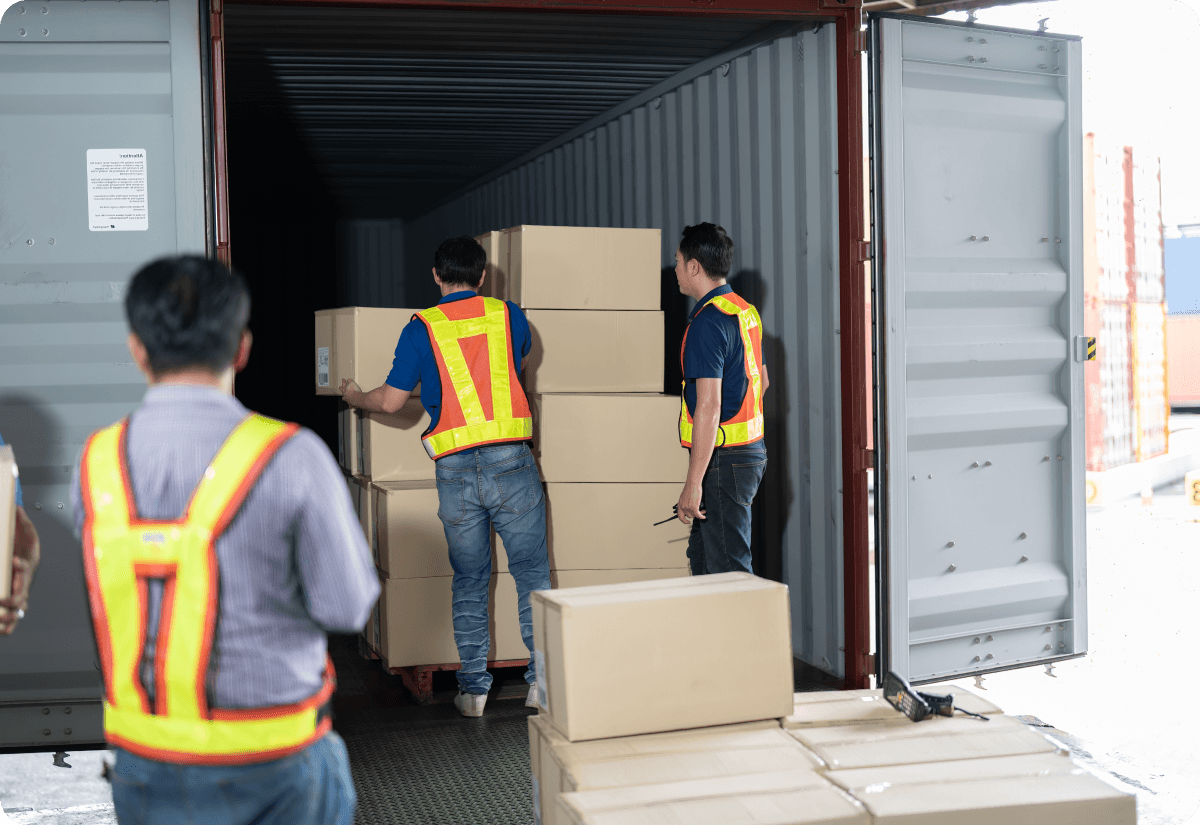As companies scale, the systems behind the scenes often make or break that growth. One of the most overlooked yet vital parts of this infrastructure is the warehousing system.
According to a recent study, warehouses that use advanced digital technologies see up to a 30% increase in productivity and a 20% reduction in logistics costs. Choosing between a smart warehouse and a traditional one isn’t just a tech decision—it’s a growth strategy.
This guide will walk you through the differences, benefits, and how to choose what’s best for your warehousing system and long-term logistics strategy.
What is Smart Warehousing and Why It Matters for Growing Businesses
Smart warehousing is more than just automation—it’s the strategic use of interconnected tools to build agility, speed, and precision into logistics operations.
This approach to warehousing relies on digital tools to automate, track, and streamline operations inside storage and distribution centers. Unlike traditional setups that rely heavily on manual input, smart systems are driven by data, software, and machines.
Here’s why adopting smarter systems matters for scaling businesses:
1. Scalability Without the Strain
Traditional systems buckle under volume spikes. Smart solutions adjust dynamically, helping you scale without massive labor costs.
2. Operational Flexibility
Market conditions change fast. A smart warehouse can adapt quickly—rerouting tasks, shifting priorities, and automating new workflows without delays.
3. Cost-Efficient Growth
With automation reducing labor dependency and errors, a smart setup cuts recurring operational costs over time.
4. Faster Decision-Making
Data from connected systems flows in real time, enabling faster adjustments and smarter choices—key for growth-minded logistics.
In short, these advanced systems bring clarity, agility, and structure at the exact moment a growing business needs them. A smart warehouse can be the foundation for greater efficiency across every stage of fulfillment.
What Makes a Smart Warehouse Different from a Traditional One
Smart warehouses go beyond simple storage—they’re powered by automation, data, and intelligent systems that reshape how goods move from shelf to shipment. Unlike traditional warehouses, which rely heavily on manual labor and basic processes, smart warehouses integrate advanced technologies for greater speed, accuracy, and scalability.
To see the contrast clearly, here’s a comparison of key features between traditional and smart warehouses:
| Feature | Traditional Warehouse | Smart Warehouse |
| Labor Dependency | High—manual scanning, picking, paperwork | Low—automated workflows, robotics, software |
| Accuracy | Prone to human errors | Consistently accurate via machine precision |
| Responsiveness | Slower to react to changes in demand | Real-time adjustment to shifts and spikes |
| Technology Use | Minimal—basic tracking or spreadsheets | Advanced—IoT, AI, integrated systems |
| Scalability | Expensive and slow to expand | Scalable on demand via modular tech |
This type of system introduces automation that allows quicker fulfillment, lower error rates, and real-time data visibility. In contrast, traditional setups often involve manual bottlenecks that slow things down.
The difference lies not just in equipment, but in how each warehousing system handles challenges. Smart setups are built for continuous improvement—something outdated systems struggle to support in a modern warehousing system. By implementing smart warehousing methods, companies can drastically improve order accuracy and turnaround time.
How Warehouse Technology Powers Smarter Operations
Modern warehouse technology is transforming how businesses handle storage, distribution, and fulfillment tasks. Companies are now able to optimize material handling, automate order picking, and maintain better visibility into inventory using advanced technologies and automation. It’s the backbone of smart warehousing, giving businesses a clear edge in competitive markets.
Below are some of the most impactful innovations driving this transformation:
IoT (Internet of Things)
Sensors on shelves, trucks, and pallets feed live updates. This turns your warehousing system into a living, thinking network that constantly informs your next move.
Robotics
Robots handle picking, packing, and transporting goods. This speeds up fulfillment while reducing injuries and repetitive tasks for human workers.
Predictive Analytics
Powered by AI, predictive models help businesses forecast demand, reduce waste, and stay ahead of supply issues.
Mobile & Cloud Integration
Access real-time performance data, track inventory, and approve shipments from anywhere. That’s game-changing control for decision-makers.
TMS & WMS Connectivity
Integrating warehouse technology with Transportation and Warehouse Management Systems ensures seamless end-to-end operations.
Computer Vision Systems
These advanced warehouse technology tools help track inventory movement visually, reducing manual counts and errors, and enhancing inventory tracking accuracy across fulfillment processes.
Automated Storage and Retrieval Systems (AS/RS)
AS/RS is a game-changing warehouse technology that minimizes space usage and speeds up inventory handling while improving order fulfillment efficiency and customer satisfaction.
Voice Picking Systems
This warehouse technology allows workers to receive pick instructions via voice, improving speed and accuracy in real-time inventory updates and reducing errors across the system.
Energy Monitoring Sensors
These help reduce operational costs by using warehouse technology to track and control power usage, while supporting sustainable warehouse layout design and optimization efforts.
Digital Twin Modeling
This emerging warehouse technology creates a real-time digital replica of the warehouse for testing layout changes and workflows, offering deeper insights into inventory levels and helping optimize the inventory management system.
When used together, these tools turn a smart warehouse into an engine of growth—one that adjusts, learns, and evolves alongside your business needs. Businesses implementing smart warehousing systems gain both cost control and real-time oversight.
Choosing the Right Warehousing System for Your Business Needs
Not every business needs a high-tech facility from day one. Here’s a practical guide to choosing:
You Might Stick with a Traditional System If:
- You’re a small operation with predictable order volumes.
- Labor is affordable, and training is consistent.
- Your current processes meet customer expectations.
- Your margins can’t support upfront tech investment yet.
A Smart Upgrade Makes Sense When:
- You’re experiencing growth that your team can’t keep up with.
- You’re facing too many inventory errors or missed shipments.
- You want to reduce costs over the long term.
- You need real-time visibility and a better customer experience.
- You’re exploring multi-location fulfillment or international shipping.
Ultimately, selecting the right warehousing system depends on your growth path, operational pain points, and readiness to embrace technology. Smart warehousing may be the key differentiator in achieving scale without sacrificing service. If your smart warehouse can connect seamlessly with suppliers, carriers, and inventory tools, your growth potential multiplies. Your warehousing system should be designed to support current needs and adapt to what’s next. For many growing businesses, a smart warehouse isn’t just better—it’s essential.
Smarter Growth Starts Here
We understand that growth can reveal gaps in outdated systems and make day-to-day operations harder to manage. At Supply Chain Solutions, we help businesses move forward by building smarter, tech-enabled warehousing strategies that support long-term success without overwhelming your team.
You don’t have to leap all at once—start with the changes that bring the biggest impact, and let us guide you every step of the way. Ready to explore what smarter warehousing could look like for your business? Discover how smart warehousing can align your operations with long-term growth. Call us today.

